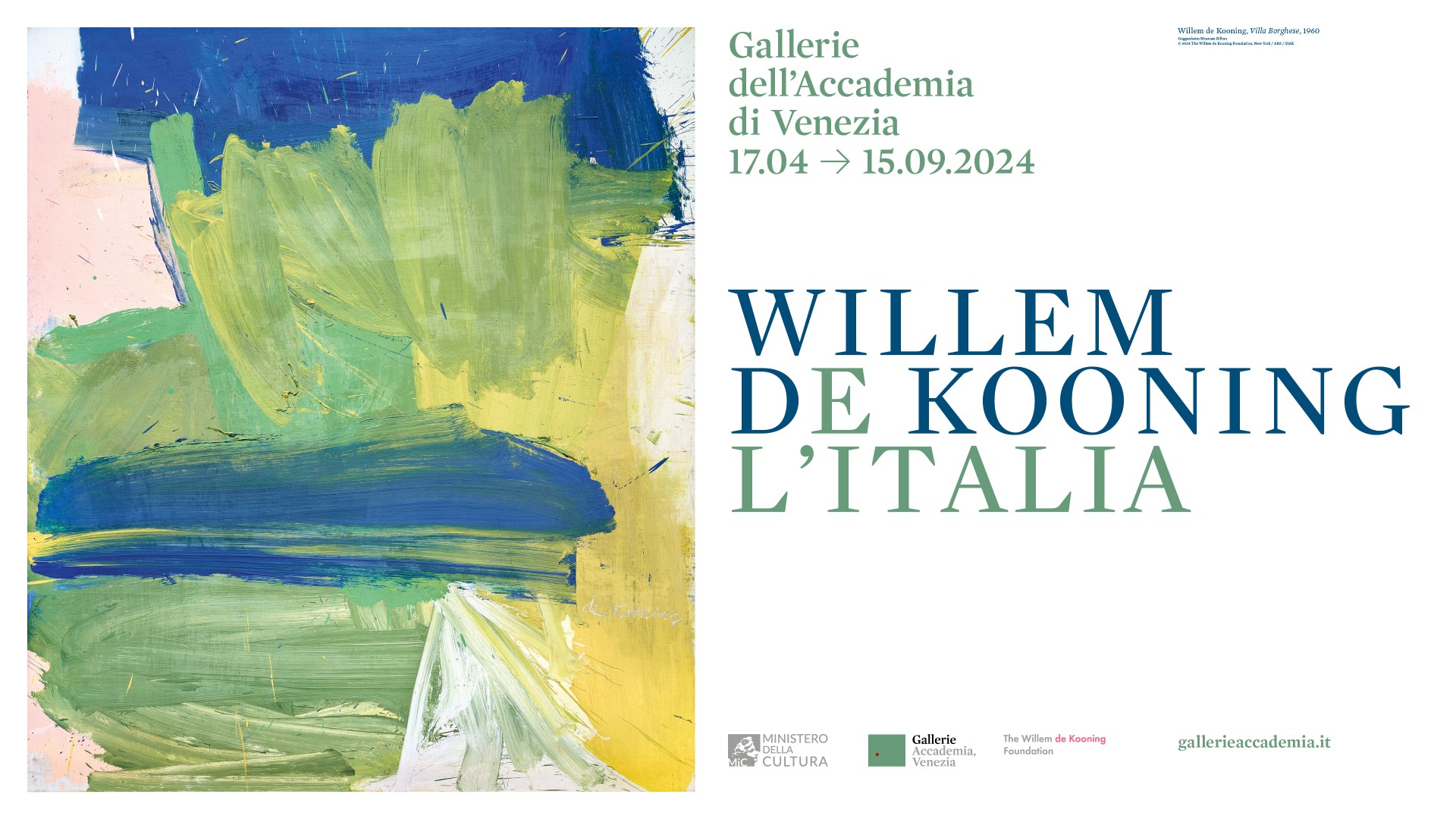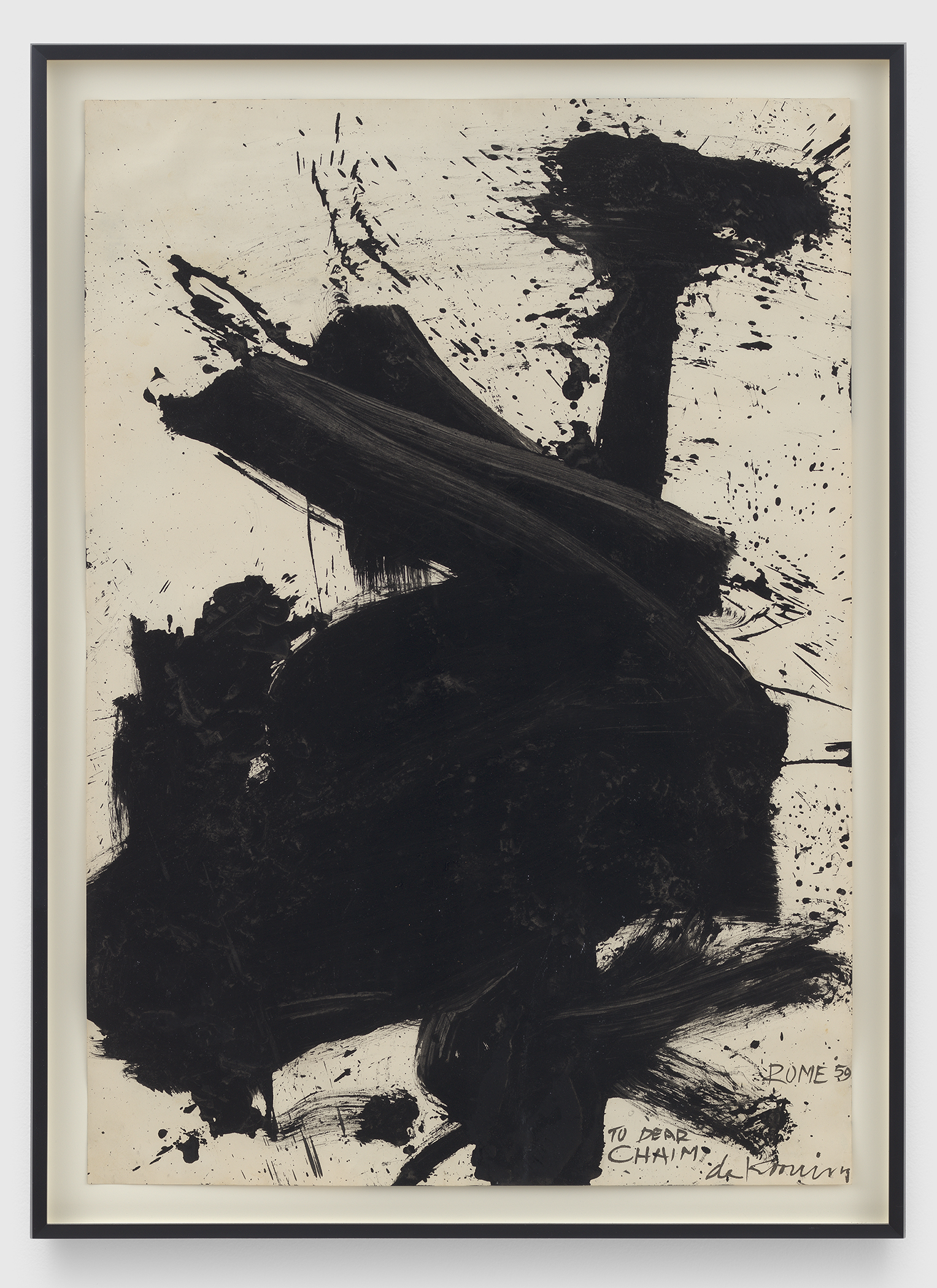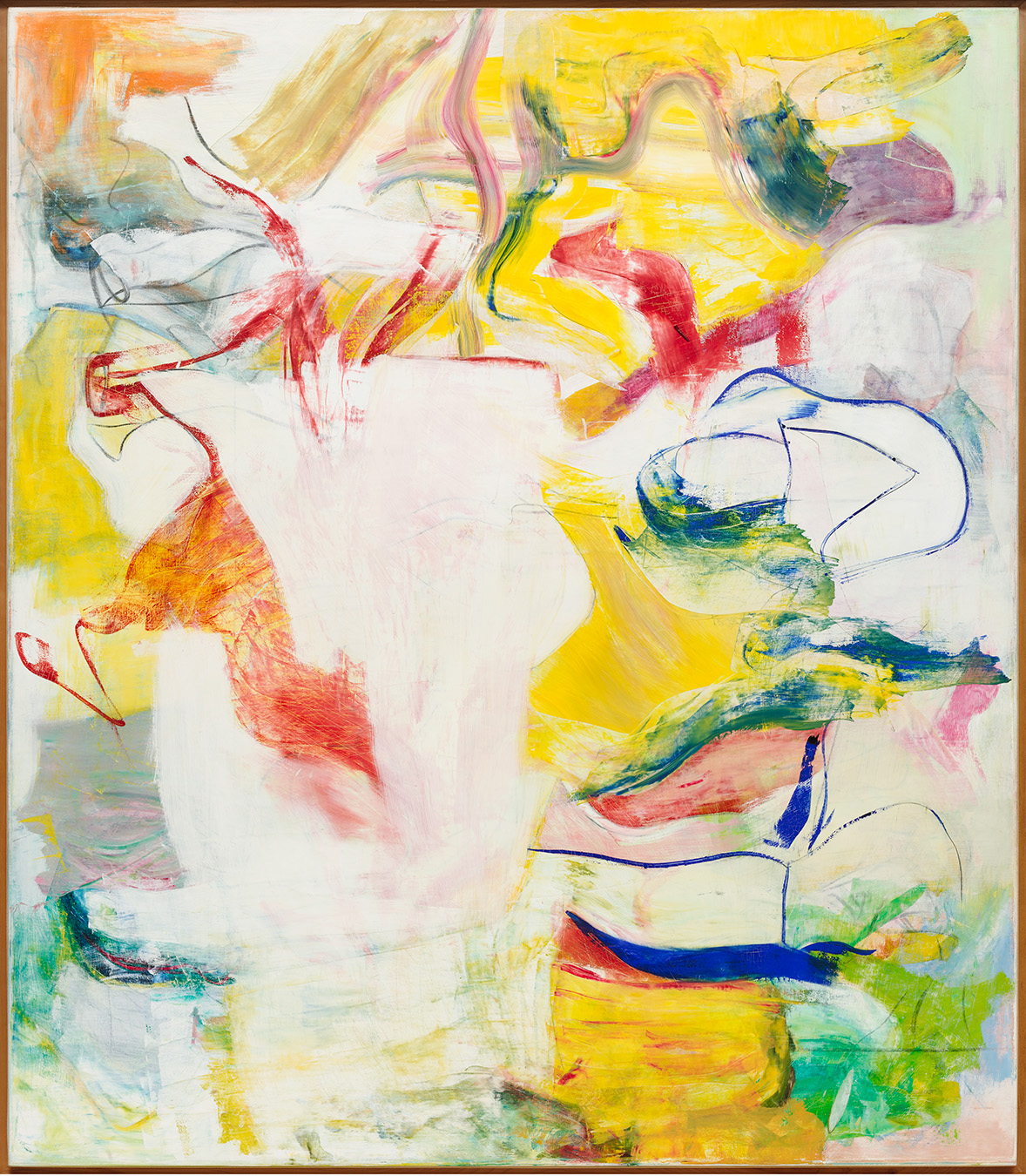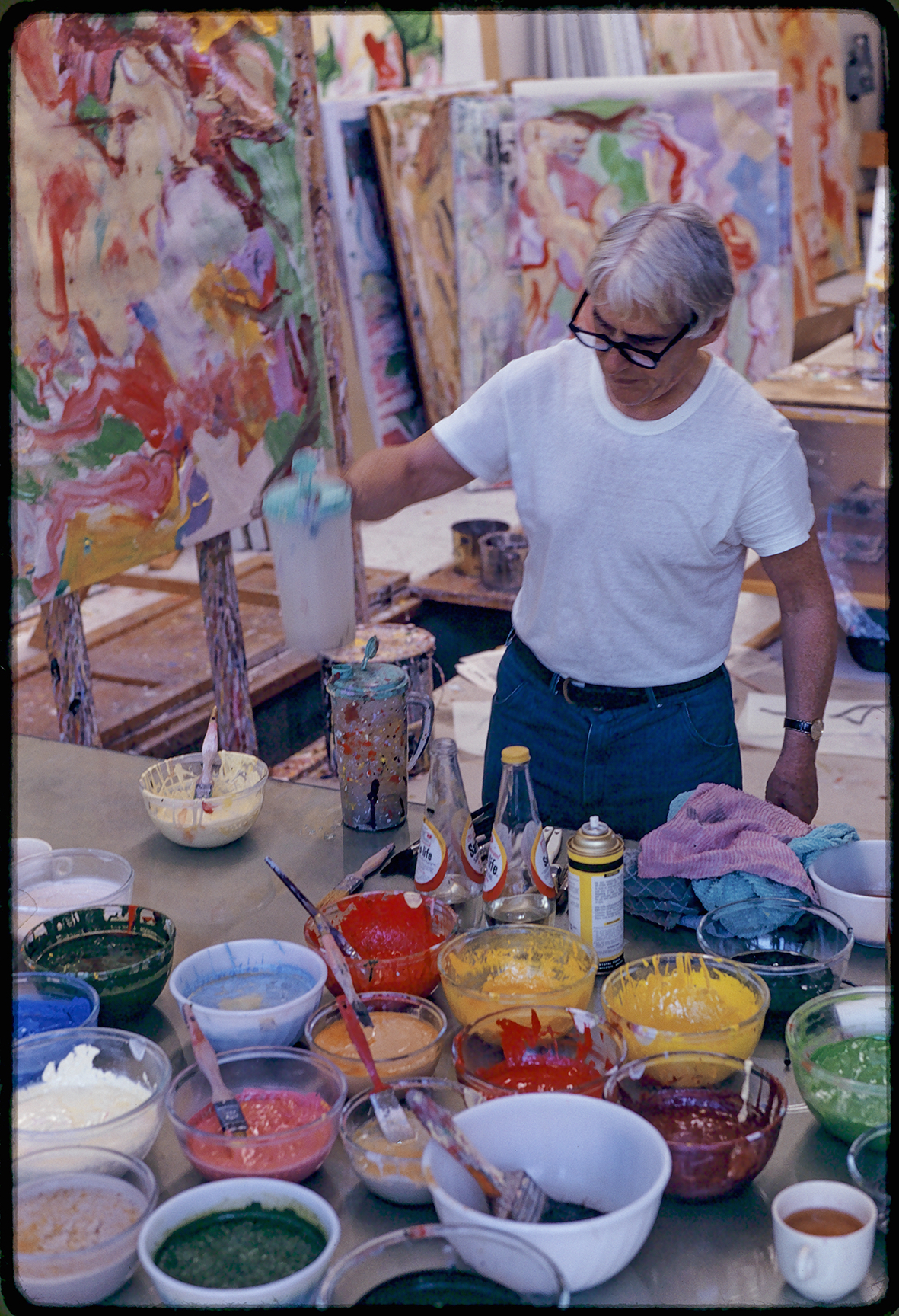
Willem de Kooning, one of the most revolutionary and influential artists of the 20th century, will be the subject of a major exhibition in the Temporary Exhibitions Halls at the Gallerie dell'Accademia in Venice.
Opening to the public on 17 April 2024 to coincide with the 60th International Venice Biennale, the exhibition Willem de Kooning and Italy will run until 15 September 2024. The exhibition will be the first to explore the time de Kooning spent in Italy in 1959 and 1969 and the profound impact those visits had on his work. It brings together around 75 works, making it the largest presentation of the artist ever organised in Italy.
The curators of the exhibition, Gary Garrels and Mario Codognato, will establish the influence of Italy on de Kooning's subsequent paintings, drawings and sculpture in America, which has never before been thoroughly researched. The lasting effect of these two creative periods will be revealed in an outstanding selection of works, ranging from the late 1950s through to the 1980s.
Giulio Manieri Elia, Director, Gallerie dell'Accademia, said: "We are convinced that proposing de Kooning was the right choice for several reasons: first of all for the importance of the artist. Secondly, because of its subject and special connections with Italy, which is dear and close to us. It should be added that following de Kooning's death, his works have rarely been seen in Italy, with the last exhibition dedicated to his work dating back eighteen years ago. Finally, what convinced us was the quality of the curators' selection, featuring around 75 works that represent the breadth of de Kooning's most expressive periods."

Untitled (Rome), 1959, ink on paper, 40 x 30 inches (101,6 x 76,2 cm)
The Renee & Chaim Gross Foundation, New York / © 2024 The Willem de Kooning Foundation, SIAE
The exhibition will include a selection of the large and striking "Black and White Rome" drawings de Kooning made during his first extended visit to Rome in 1959. They will be shown with works from the late 1950s, made in the years leading up to de Kooning's first visit to Italy.
For the first time, three of de Kooning's best-known pastoral landscapes Door to the River, A Tree in Naples and Villa Borghese will be exhibited together. Painted in New York in 1960, the lingering memory of his trip to Italy is clear. This section of the exhibition also includes large figurative paintings from the mid-1960s that paved the way for his interest in sculpture.

Untitled #12, 1969, bronze, 7 ½ x 9 ¼ x 5 ¾ inches (19,1 x 23,5 x 14,6 cm)
Raymond and Patsy Nasher Collection, Nasher Sculpture Center, Dallas / © 2024 The Willem de Kooning Foundation, SIAE
A gallery focusing on sculpture will showcase thirteen small bronzes that de Kooning made in Rome. Created after a chance encounter while in Rome with a sculptor friend, these were the result of the artist's first experiments with clay, leading him to produce a substantial body of sculpture back in New York from 1972 to 1974.
The exhibition will also place painting and sculpture in dialogue with drawings from the 1960s and 1970s. Highlights include four ink drawings that de Kooning made while in Spoleto in 1969, presented alongside a complementary selection of intimate, gestural drawings that are conceptually related to the sculptures. In these drawings de Kooning fragmented the figure, often leaving empty spaces balanced against his vigorous lines.

Pirate (Untitled II), 1981, oil on canvas, 88 x 77 inches (223,4 x 194,4 cm)
Museum of Modern Art, New York. Sidney and Harriet Janis Collection Fund, 1982 / © 2024 The Willem de Kooning Foundation, SIAE
The exhibition, designed in collaboration with the UNA/FWR Associati studio directed by architect Giulia Foscari ends with a selection of de Kooning's late paintings from the 1980s, in which the language of three-dimensional form is transfigured into a new, abstract poetry. These paintings contain the faintest figurative references and are characterised by subtly tinted whites balanced by brilliant bands and areas of color. They are among de Kooning's most sublime works, in which a sense of Baroque composition resides.
Gary Garrels and Mario Codognato, Curators, said: "Willem de Kooning collected from the cacophony of visual excitement, light and movement in daily life to create his own lexicon. The impact of any visual encounter could render or generate an idea for moving into a new drawing or painting. Observing how his New York and East Hampton environments worked into his paintings and drawings, the same occurred in Rome – a gestalt of "glimpses". During these formative periods of time in Rome, de Kooning synthesised from all around him a new way of looking and activating his medium, experiencing both classical Italian paintings and sculpture as well as the work of his new Italian artist friends."

Willem de Kooning in his East Hampton Studio, New York, 1971, photograph by Dan Budnik
©2024 The Estate of Dan Budnik. All Rights Reserved / Artwork © 2024 The Willem de Kooning Foundation, SIAE
Biography
Willem de Kooning (1904, Rotterdam, the Netherlands – 1997, East Hampton, USA) was one of the great artists of the twentieth century. He received critical acclaim in 1948 with a oneperson exhibition of non-representational, densely worked, oil and enamel paintings, including his now revered black-and-white paintings. Shortly thereafter, in 1950, de Kooning completed Excavation, a related grand-scaled abstraction. Arguably one of the most important paintings of the twentieth century, Excavation was chosen as one of the works to represent the United States at the XXV Venice Biennale, June 3 – October 15, 1950. This would be de Kooning's first of six Biennales (1950, 1954, 1956, 1978, 1986 and 1988).
A maverick painter, who rejected the accepted stylistic norms by dissolving the relationship between foreground and background and by using paint to create emotive, abstract gestures, de Kooning, with his peers of the late forties and early fifties, was variously labelled as an "Action Painter," "Abstract Expressionist" or simply of the "New York School." De Kooning was one of the handful of non-conforming artists responsible for the historic shift of the center of avant-garde art from Paris to New York in the years following World War II.
De Kooning was awarded many honours in his lifetime, including The Presidential Medal of Freedom in 1964, USA. His artwork has been included in thousands of exhibitions and is in the permanent collections of many of the world's eminent art institutions, including the Peggy Guggenheim Collection, Venice; the Stedelijk Museum, Amsterdam; Tate Modern, London; The Museum of Modern Art, New York; Solomon R. Guggenheim Museum, New York; The Metropolitan Museum of Art, New York; the Art Institute of Chicago; the Smithsonian Institution's Hirshhorn Museum & Sculpture Garden, Washington D.C.; the National Gallery of Art, Washington, D.C. and the National Gallery of Australia, Canberra. Major publications have been authored by Gabriella Drudi, John Elderfield, Gary Garrels, Thomas Hess, Harold Rosenberg, Richard Shiff, and Judith Zilzcer.
Tickets and other infos
Admission to the exhibition is granted with the ticket to the permanent collection.
Tickets and reservations.
We'd like to inform our guests to Willem de Kooning e l'Italia that our museum staff will perform baggage checks of anyone wishing to visit the temporary exhibition area. You could otherwise deposit any bag in the designated lockers before entering the museum halls.
Discover our workshops and tours for secondary schools, as well as guided tours to the exhibition.
For after hours exclusive tours or events: ga-ave.marketing@cultura.gov.it
Press enquiries
International: Bolton & Quinn
Erica Bolton | erica@boltonquinn.com | +44 20 7221 5000 | +44 77 1169 8186
Italia – Maria Bonmassar
Maria Bonmassar, Veronica Ventrella | maria@mariabonmassar.com | + 39 335 490311
Veronica Ventrella | veronicav@adicorbetta.org| +39 347 531 0235
Ufficio stampa Gallerie dell'Accademia
Marsilio Arte
Giovanna Ambrosano, Vera Mantengoli | ufficio.stampa@marsilioarte.it | + 3405021740